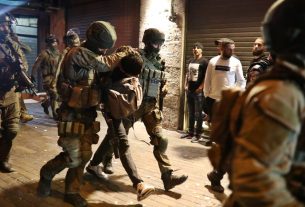Mon 15 July 2019:
Five years have passed since the Iraqi forces returned the village of Awja, south of Tikrit, the birthplace of former Iraqi President Saddam Hussein, from the grip of ISIS. Influential militias, however, refused the return of villagers despite the issuance of official government orders that allow their return, claiming there are factions still loyal to the Baath Party.
Saddam Hussein was hanged on the first day of Eid ul-Adha in December 2006. The execution was carried out at Camp Justice, an Iraqi army base in Kadhimiya, a neighborhood of northeast Baghdad. He was buried at his birthplace of Awja in Tikrit, Iraq on December 31, 2006. His tomb was reported to have been destroyed in March 2015. Reports had said the tomb was exploded by members of the Iranian Militias in Iraq and Syria (IMIS); however, some of Saddam’s family members said the corpse was transferred to another location before Shia paramilitaries of the Hashed al-Shaabi coalition could sabotage it.
The number of displaced families of Awja, according to official statistics, reach about 1,500 families. They were unable to return with their families because of the presence of IMIS elements in the village. “We are afraid that if we return, we will get arrested, not to mention that Iran already imposed control over the area, to an extent that the Awja Hospital was renamed to Imam Mahdi Hospital,” one of the displaced residents told reporters.
It should be noted that most of the displaced families from the village ofAwja live in difficult economic conditions as a result of the collective punishment taken against them since 2003, including the removal of their jobs and the seizure of their money and real estate, as they were considered close to the former regime.
Source: thebaghdadpost
Think your friends would be interested? Share this story!





